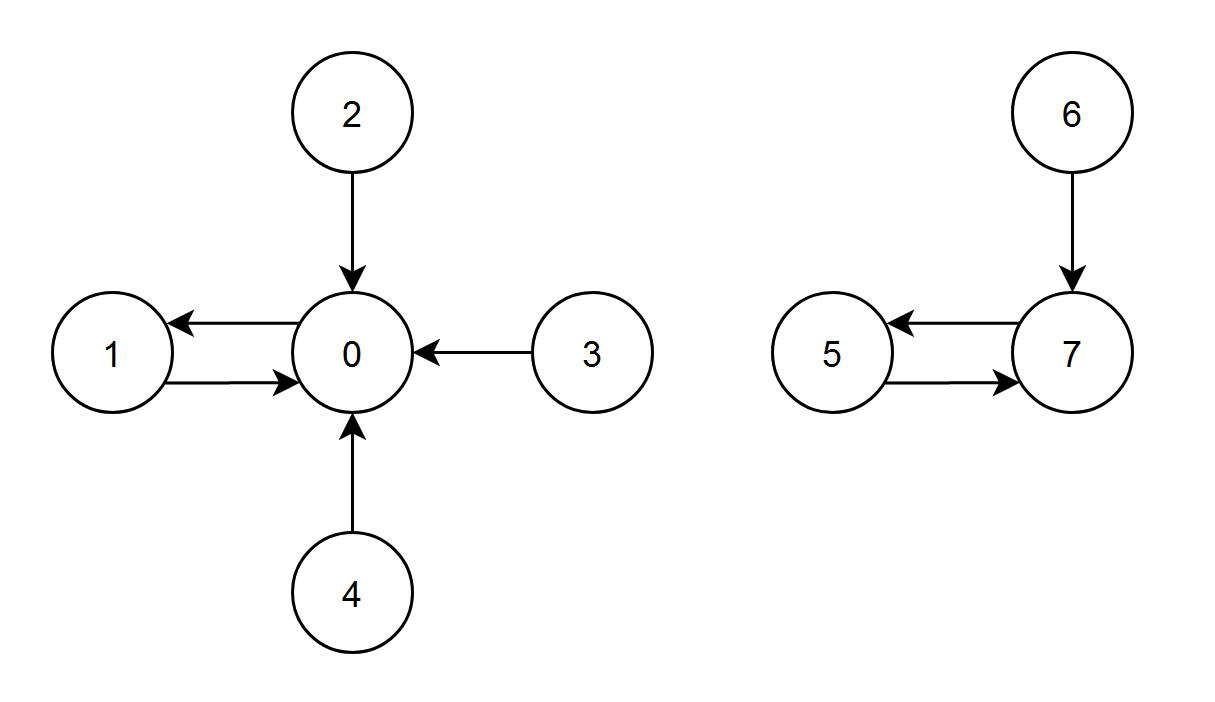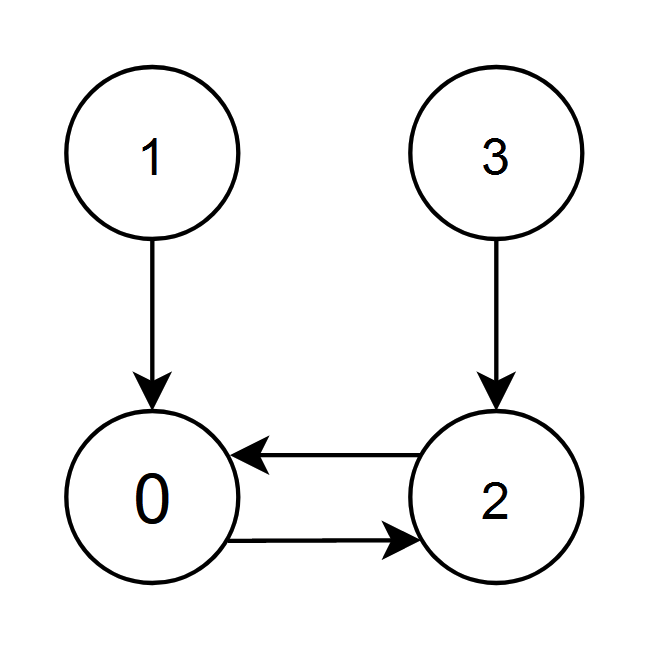2374. 边积分最高的节点
题目描述
给你一个有向图,图中有 n 个节点,节点编号从 0 到 n - 1 ,其中每个节点都 恰有一条 出边。
图由一个下标从 0 开始、长度为 n 的整数数组 edges 表示,其中 edges[i] 表示存在一条从节点 i 到节点 edges[i] 的 有向 边。
节点 i 的 边积分 定义为:所有存在一条指向节点 i 的边的节点的 编号 总和。
返回 边积分 最高的节点。如果多个节点的 边积分 相同,返回编号 最小 的那个。
示例 1:
输入:edges = [1,0,0,0,0,7,7,5] 输出:7 解释: - 节点 1、2、3 和 4 都有指向节点 0 的边,节点 0 的边积分等于 1 + 2 + 3 + 4 = 10 。 - 节点 0 有一条指向节点 1 的边,节点 1 的边积分等于 0 。 - 节点 7 有一条指向节点 5 的边,节点 5 的边积分等于 7 。 - 节点 5 和 6 都有指向节点 7 的边,节点 7 的边积分等于 5 + 6 = 11 。 节点 7 的边积分最高,所以返回 7 。
示例 2:
输入:edges = [2,0,0,2] 输出:0 解释: - 节点 1 和 2 都有指向节点 0 的边,节点 0 的边积分等于 1 + 2 = 3 。 - 节点 0 和 3 都有指向节点 2 的边,节点 2 的边积分等于 0 + 3 = 3 。 节点 0 和 2 的边积分都是 3 。由于节点 0 的编号更小,返回 0 。
提示:
n == edges.length2 <= n <= 1050 <= edges[i] < nedges[i] != i
解法
方法一:一次遍历
我们定义一个长度为 \(n\) 的数组 \(\textit{cnt}\),其中 \(\textit{cnt}[i]\) 表示节点 \(i\) 的边积分,初始时所有元素均为 \(0\)。定义一个答案变量 \(\textit{ans}\),初始时为 \(0\)。
接下来,我们遍历数组 \(\textit{edges}\),对于每个节点 \(i\),以及它的出边节点 \(j\),我们更新 \(\textit{cnt}[j]\) 为 \(\textit{cnt}[j] + i\)。如果 \(\textit{cnt}[\textit{ans}] < \textit{cnt}[j]\) 或者 \(\textit{cnt}[\textit{ans}] = \textit{cnt}[j]\) 且 \(j < \textit{ans}\),我们更新 \(\textit{ans}\) 为 \(j\)。
最后,返回 \(\textit{ans}\) 即可。
时间复杂度 \(O(n)\),空间复杂度 \(O(n)\)。其中 \(n\) 为数组 \(\textit{edges}\) 的长度。
1 2 3 4 5 6 7 8 9 | |
1 2 3 4 5 6 7 8 9 10 11 12 13 14 15 | |
1 2 3 4 5 6 7 8 9 10 11 12 13 14 15 16 | |
1 2 3 4 5 6 7 8 9 10 | |
1 2 3 4 5 6 7 8 9 10 11 12 13 | |
1 2 3 4 5 6 7 8 9 10 11 12 13 14 15 16 17 | |




